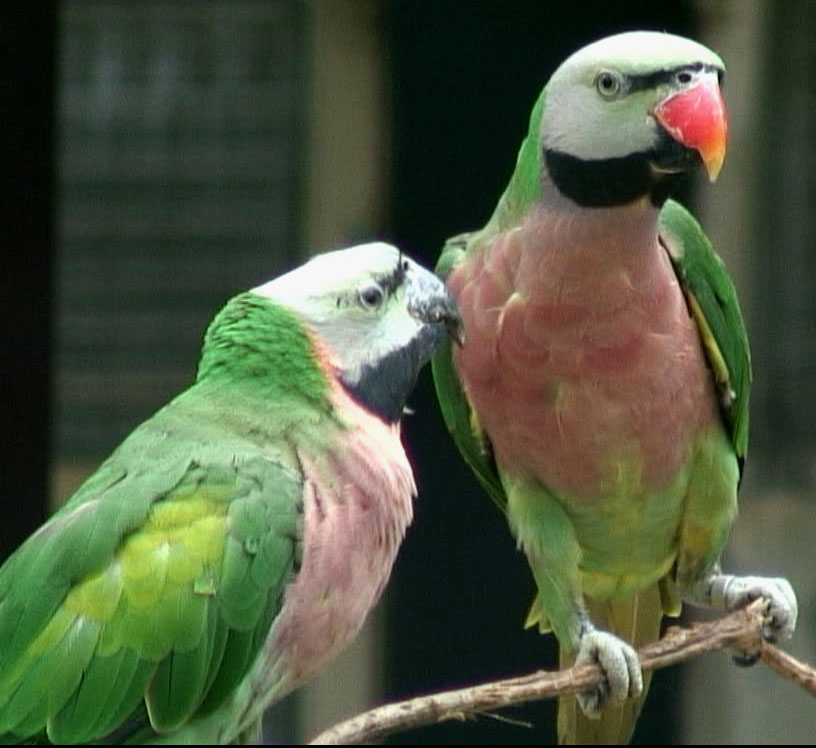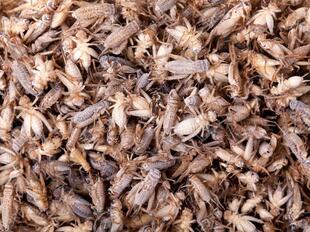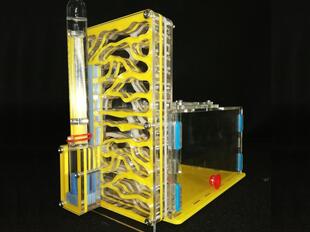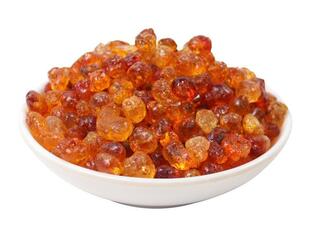
Red-breasted parakeet (Psittacula alexandri)
Phylum —chordata
Class — aves
Order — psittaciformes
Family — psittaculidae
Genus – psittacula
Appearance
Red-breasted parakeetsare attractive green birds with a salmon-colored chest and upper abdomen. The upper part of the lower abdomen is lilac, and the lower part is green. Females usually have a paler coloration than males. The birds have a blue-grey head, a thin black band between their eyes, and a wider black band on each side of their face, which looks something like a moustache. There is a yellow patch on each wing. The tail is a mixture of blue and green.
When the birds are mature, the males have an orange beak while the females have a black one. Immature birds of both genders have a black beak and a green chest and abdomen. Adult birds are between 13 and 16 inches in length.
Habitat
They live mainly in Indonesia and Southeast Asia.
Behavior
Red-breastedparakeets can be seen in the wild in large flocks ranging between 20 to 60 birds. These parrots do not usually mingle with other parrot species but have done so on occasion. These parrots are loud when together in flocks and can often be heard long before their arrival. Like most Asiatic parrots, these birds are sentinels and will make a loud call when danger is near.
Diet
Wild red-breasted parakeetshave a diet that consists of leaf buds, berries, fruits, seeds, insects, nuts and vegetables.
Reproduction
When breeding season approaches, around April, these birds will pair off and look for a nesting hollow cavity to raise their young. The female will find an old hole inside a tree and will modify it to her liking before she lays her eggs. The male stands guard and feeds the female while she is incubating. If babies are successfully raised, they leave the nest around seven to eight weeks.
In captivity
The average lifespan of the red-breasted parakeetis 20 to 25 years.
At the minimum, this bird requires a small macaw cage—3 feet by 2 feet by 3 feet. Two individuals should not share a cage, and different genders together can also be a problem. Females tend to dominate males.
These birds are inquisitive and will always want to know what you're doing. They are explorers. If left unattended outside of their cage, they may end up in a part of your home you don't want them in. It's best to have a perch nearby and bring the bird back to it whenever it strays. This bird enjoys perching on shoulders and wants to be part of the action.
If you are interested in a pet for the whole family, a red-breasted parakeet may not be the best choice—it's more a one-person pet. However, if you are a single person or otherwise intend to be the bird's sole caretaker, then this bird could very well be the most loyal companion you will ever have.
Red-breastedparakeets are very active birds, both in the wild and in captivity. Give this bird plenty of room to climb, swing, and play both in and out of their cages.Red-breastedparakeets should receive a minimum of four hours of supervised playtime outside of their cages per day in a safe, "bird-proofed" area. Because of these requirements, they may not make the best pets for someone who has very little time to interact with their pets.
Toys are essential to keeping this parakeet happy and out of trouble. Be sure to give your bird a large cage with plenty of ladders, swings, and chew toys. Any toys made out of wood, leather, or beads will be much appreciated and provide needed stimulation.
As with all parrots, it is essential to feed pet red-breasted parakeets a varied diet that includes a high-quality commercial pellet formula and seed mixture, as well as a range of fresh foods. Feed approximately 1/4 cup of pelleted food and 1//4 cup of fresh fruits and vegetables daily. A raw and varied diet will help ensure that your bird maintains top nutrition. Red-breastedparakeets are known to be good eaters. They tend to be less finicky than other birds about the types of fruits and vegetables they are willing to try. Seeds should be fed in moderation to avoid obesity, but are an important source of protein for your bird. Fruits and vegetables that you can feed include melon, apple, kale, strawberries, carrots, collard greens, and banana. Don't feed avocado, as it can be toxic to these birds.
 Russian
Russian
 English
English


















